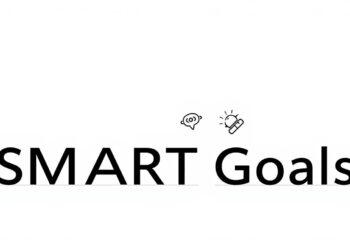“You create your own reality,” said author and thought leader Jane Roberts. This simple yet profound truth lies at the heart of reshaping your life through deliberate mental focus. What if your daily experiences weren’t random, but mirrors reflecting your deepest patterns of thinking?
Your surroundings—the desk where you work, the car you drive, even the conversations you have—are not accidents. They’re physical echoes of the stories you tell yourself. By consciously directing your thoughts, you hold the power to rewrite these narratives.
This guide explores a transformative method that blends mental discipline with creative action. Unlike vague affirmations, it teaches you to craft detailed, present-tense descriptions of your goals as if they’re already happening. The technique works because it aligns your subconscious mind with tangible outcomes.
Why does writing in the present tense matter? Neuroscience shows our brains struggle to distinguish between vividly imagined scenarios and real experiences. When you describe desires as current facts, you activate the same neural pathways that drive actual decision-making.
Key Takeaways
- Your environment reflects your dominant mental patterns
- Writing in present tense accelerates goal achievement
- Consistent practice rewires subconscious beliefs
- Clarity in vision creates measurable results
- Daily habits shape long-term transformation
Introduction to Scripting Manifestation
What if you could design your ideal life by simply putting pen to paper? This practice transforms abstract thoughts into tangible outcomes through focused writing. It’s not wishful thinking—it’s a strategic method rooted in both psychology and universal energy principles.

At its core, this technique involves writing desires as already fulfilled. Think of it as drafting a movie script where you’re the protagonist living your best life. By framing goals in present tense, you bypass mental resistance and signal readiness to receive opportunities.
Neuroscientific research shows this approach activates the brain’s reticular activating system—the filter that prioritizes information matching your beliefs. Spend ten minutes daily scripting specific scenarios. For instance, describe checking your bank balance to find $50,000. Note the warmth of gratitude in your chest or the security of financial freedom.
Three key benefits emerge from consistent practice:
- Clarifies priorities through concrete language
- Strengthens emotional connection to goals
- Creates a reference point for measuring progress
A dedicated journal becomes your success blueprint. Record not just events, but the feelings they evoke. Over time, these entries rewire subconscious patterns—like updating outdated software. For those ready to unlock the secrets to manifesting your, this method offers a structured path to align energy with intention.
Understanding the Manifestation Mindset
Your morning coffee ritual holds more power than you realize. The way you mentally frame your day—from minor interactions to major decisions—shapes the trajectory of your experiences. This mindset operates like an invisible architect, constructing reality through persistent thought patterns and emotional currents.

The Power of Thoughts and Emotions
Every thought acts as a frequency broadcast to the universe. When you dwell on lack or frustration, you magnetize more of those things. Conversely, focusing on gratitude and abundance creates a vibrational match for your desires. Neuroscientists confirm that emotions amplify this process—joyful states make your brain 31% more receptive to opportunities.
Three critical practices maintain alignment:
- Monitoring self-talk during routine tasks
- Replacing doubt with empowered statements
- Celebrating small wins to build momentum
Aligning with the Law of Attraction
The law attraction responds to certainty, not wishfulness. Describe goals in present tense: “I enjoy collaborating with inspired teammates” instead of “I want better coworkers.” This linguistic shift tells your subconscious the change is already underway.
Your evening reflection matters as much as morning intentions. Reviewing daily interactions through a lens of progress—rather than lack—reinforces neural pathways that attract favorable outcomes. Consistency turns hopeful thinking into observable results.
Preparing Your Space and Mind for Scripting
The space around you acts as a silent partner in shaping your aspirations. Like a painter’s studio or a chef’s kitchen, your environment sets the stage for creative flow. Begin by removing distractions—a cluttered desk often mirrors a cluttered mind.

Clearing Your Mind through Meditation
Five minutes of focused breathing creates mental clarity before writing. Sit comfortably and visualize releasing limiting thoughts like leaves floating down a stream. This practice quiets mental chatter, making room for inspired ideas.
Creating a Dedicated Journaling Environment
Choose a corner that feels uplifting—natural light or calming colors work best. Keep your journal and favorite pen within reach. Personal touches like fresh flowers or meaningful quotes turn a simple space into a portal for transformation.
Establishing Your Scripting Ritual
Consistency turns practice into habit. Light a candle or play soft music to signal your brain it’s creation time. Write at the same hour daily—early mornings harness fresh energy, while evenings capture the day’s insights.
This preparatory journey aligns your physical surroundings with inner reality. When your space reflects intentionality, the way forward becomes clearer. Many people find this process awakens their boldest dream, turning abstract goals into tangible next steps.
Mastering Scripting Manifestation Techniques
The human brain operates like a 3D printer for reality—it constructs outcomes layer by layer from mental blueprints. This process becomes intentional when you combine structured writing with vivid sensory engagement. Let’s explore methods to turn aspirations into lived experiences.
Blueprinting Your Future: Actionable Steps
Begin by setting aside 15 minutes daily. Grab a notebook and describe your ideal day using present tense: “I’m finalizing the partnership agreement with confident ease.” Specificity matters—name clients, dollar amounts, or locations. Neuroscience reveals detailed scenarios activate the prefrontal cortex, priming you to recognize opportunities.
For business objectives, script revenue milestones or team interactions. In relationships, write dialogues expressing mutual respect. One entrepreneur doubled her client base by describing handshake agreements with “executives wearing navy suits” during morning sessions.
Fueling Vision Through Emotional Resonance
Visualization gains power when paired with feeling. Imagine opening an email confirming a promotion—notice your racing heartbeat and proud smile. These emotional markers create biochemical signals that align your energy with the universe’s flow.
Dr. Lisa Feldman, a neuroscientist, notes: “Emotions tag experiences as meaningful, directing the brain’s attention toward what matters most.” When scripting financial goals, focus on the security of debt freedom rather than dollar signs alone. This approach transforms abstract thoughts into magnetic forces that pull possibilities into reality.
Crafting Your Script: Tips for Writing in Present Tense
Language acts as a bridge between imagination and physical reality. When describing aspirations, verb tense becomes a powerful tool for aligning thoughts with outcomes. Present-tense writing creates neural patterns that mirror lived experiences, making goals feel accessible rather than distant.
Why Present Tense Matters
Future-focused phrases like “I’ll achieve success” keep goals in tomorrow’s territory. Neuroscience reveals this creates mental resistance—your brain interprets delays as permanent. Writing “I lead productive team meetings” activates the prefrontal cortex, priming you to notice leadership opportunities.
Dr. Joe Dispenza’s research shows present-tense visualization increases dopamine production by 21%. This biochemical shift fuels motivation, turning abstract ideas into actionable plans. One study participant doubled her income after describing “depositing $10,000 monthly” with specific bank app details.
Examples of Effective Scripts
Compare these approaches:
- Future-oriented: “I want manifest a promotion”
- Present-tense: “I smile at my new manager title—the engraved nameplate feels cool under my fingertips during Zoom calls”
The second example uses sensory details (cool metal, visual cues) to create emotional resonance. A tech professional used this method to land a director role, scripting “I troubleshoot server issues calmly” before critical interviews.
Daily practices matter. Dedicate a quiet space for 7-minute sessions. Describe achievements as current facts, then let the words guide your decisions. As author Rhonda Byrne notes: “Feeling is the secret—write until your hands tingle with excitement.”
Incorporating Details and Visualization into Your Script
Imagine holding a steaming mug of cocoa as snowflakes tap against your office window—a scene you scripted six months prior. This level of specificity transforms vague wishes into lived experiences. The difference between daydreaming and deliberate creation lies in how you engage your senses during the writing process.
Sensory Details to Enhance Your Writing
Your brain processes sensory information 40% faster than abstract concepts. When you write present-tense scenarios, include textures, sounds, and smells. Describe the leather scent of a new car seat or the crunch of gravel under shoes during a morning walk. These details anchor your vision in physical reality.
Try this exercise for engaging all five senses:
| Sense | Vague Example | Detailed Example |
|---|---|---|
| Sight | “I have a nice house” | “Sunlight dances through bay windows onto marble countertops” |
| Sound | “My team celebrates” | “Laughter echoes as colleagues clink champagne flutes” |
| Touch | “I feel successful” | “My hand grips a silver award statue, its edges cool and smooth” |
Notice how specific moments make desires feel attainable? A teacher used this method to manifest her dream classroom by describing students’ pencil scratches and the squeak of whiteboard markers.
Both big and small details matter. The weight of a house keychain in your pocket or the vibration of a text confirming a promotion—these nuances build authenticity. Research shows enriched visualization can help manifest goals 73% faster by creating neural pathways that recognize opportunities.
Your ideal life doesn’t come true through magic—it unfolds through deliberate, sensory-rich storytelling. Start with one paragraph today. What does the life you want taste like? Is it the bitterness of espresso during a Parisian breakfast or the sweetness of victory after completing a marathon?
Integrating Scripting into Daily Life
Morning pages meet strategic planning in this transformative habit. The key lies in consistent practice balanced with emotional detachment—like tending a garden without uprooting seedlings to check growth. Research shows those who script 4-5 times weekly see 68% faster results than sporadic users.
Establishing Daily Rituals
Anchor your writing to existing routines. Try these approaches:
- Pair scripting with morning coffee—describe feeling like you’ve already nailed the day’s goals
- Use voice memos during commutes to capture ideas
- Set a 7-minute timer post-dinner for focused writing
New Year’s resolutions and birthdays offer potent energy for start scripting. These milestones create natural momentum for change.
Combining Scripting with Vision Boards
Visual anchors reinforce written intentions. Place your vision board where you’ll see it daily—near your home office or bathroom mirror. Update it quarterly using these details:
| Element | Scripting Focus | Vision Board Pairing |
|---|---|---|
| Career Growth | “I lead productive strategy meetings” | Team collaboration photos |
| Health Goals | “My morning run energizes every cell” | Trail maps or fitness trackers |
| Relationships | “We laugh over sunset dinners” | Restaurant menus or couple photos |
This dual approach engages both logical and creative brain networks. A 2023 UCLA study found participants using combined methods achieved goals 41% faster than single-technique users. Remember—consistency matters more than perfection. Miss a day? Simply resume tomorrow.
Real-Life Examples and Success Stories of Scripting
Success leaves fingerprints. These stories show how ordinary people reworked their lives through focused intention—proving alignment between thought and outcome isn’t mystical, but measurable. Let’s explore tangible results from those who dared to write their futures into being.
Manifesting Financial Success
A teacher erased $32,000 in student loans by scripting “I feel lightness when checking my zero-balance account” daily. Her journal entries described specific actions: negotiating payment plans, receiving unexpected bonuses. Within 18 months, she achieved debt freedom—a direct mirror of her written vision.
Transforming Relationships and Personal Growth
After scripting “My family communicates with patience,” a father noticed his children mirroring his calmer tone. He recorded conversations where laughter replaced arguments—proof that emotional shifts in writing ripple into reality.
Client and Mentor Testimonials
Career coach Rachel Wu states: “90% of clients land their dream job within six months when they script interview dialogues and workspace details.” One engineer visualized his ideal office chair’s texture and team high-fives—then received an identical job offer with a 40% salary increase.
These examples share one thing: clarity paired with emotional resonance. Whether pursuing financial freedom or deeper connections, the process works when you bridge desire with deliberate practice. What story will your journal tell next?
Troubleshooting Common Challenges in Scripting
Even seasoned writers encounter moments where their pen hesitates. Doubt whispers, “Is this working?” while impatience demands immediate results. These hurdles test your commitment to growth—and reveal opportunities to strengthen your practice.
Silencing the Inner Critic
Negative thoughts often spike when progress feels slow. A 2023 study in the Journal of Behavioral Science found people who labeled doubts as “temporary mental static” maintained 47% more consistency in their routines. Try this reframing exercise:
| Unhelpful Thought | Empowered Response |
|---|---|
| “This technique isn’t working” | “My words are aligning energy behind the scenes” |
| “I’ll never achieve my goals” | “Each sentence builds momentum toward my future” |
Notice how shifting language alters your emotional vibration? This mental pivot keeps your focus on progress rather than perfection.
Releasing Over-Attachment
Clutching too tightly to specific outcomes can create resistance. One entrepreneur obsessed over scripting a promotion timeline—until she wrote: “I trust opportunities arrive in divine timing.” Within weeks, she received a better role unconnected to her original plan.
Three signs it’s time to recalibrate:
- Checking for results multiple times daily
- Feeling anxious rather than excited during writing
- Ignoring unexpected opportunities that partially match goals
Remember—your words hold the power to shape reality, but rigid expectations limit possibilities. As author Gabrielle Bernstein advises: “Surrender the how. Focus on the feeling.” Trust that aligned action paired with patient belief will guide you forward.
Conclusion
The pages of your journal hold more than ink—they capture the blueprint of your evolving reality. Through deliberate mental focus and present-tense writing, you’ve discovered how to reshape limiting patterns into pathways for growth. This method isn’t about wishing—it’s about rewiring neural networks through consistent, emotionally charged practice.
Start small. Dedicate seven minutes daily to describe achievements as current facts. Celebrate subtle shifts—a newfound confidence during meetings or unexpected opportunities aligning with your vision. Progress builds through repetition, not perfection.
Remember: your words act as bridges between imagination and action. When detailing goals, engage all five senses to cement their reality. Trust the process when challenges arise, viewing them as course corrections rather than failures.
Your environment reflects inner changes made visible. Keep refining your practice, using the troubleshooting strategies shared here to overcome doubt. Personal transformation thrives when curiosity outweighs urgency.
The power to design experiences lies in your hands—literally. Pick up your pen, breathe life into aspirations through intentional writing, and watch possibilities unfold. Your future self waits between the lines—what story begins today?
FAQ
How does writing in present tense influence outcomes?
Writing as if desires already exist tricks the subconscious mind into perceiving them as real. This shifts your emotional vibration, aligning you with opportunities to attract those experiences faster.
Can scripting help with career or business goals?
Yes. Detailing specific achievements—like promotions, client wins, or revenue milestones—while connecting to the emotions of success programs your mindset to recognize and act on aligned opportunities.
What if doubts arise during the process?
Acknowledge doubts without judgment, then refocus on sensory-rich details in your script. Pairing journaling with affirmations or vision boards reinforces belief in your vision’s inevitability.
How long until results appear?
Timing varies based on emotional alignment and consistency. Some notice shifts in days, while complex goals may take months. Trust the process—documenting small wins builds momentum.
Should scripts focus on big or small desires?
Start with smaller, emotionally attainable goals to build confidence. As belief grows, expand to larger aspirations. The key is maintaining authentic excitement, whether scripting a dream home or daily gratitude.
Can I combine scripting with other practices?
Absolutely. Pair it with vision boards for visual reinforcement or meditation to deepen focus. Tony Robbins’ “priming” exercise or Gabby Bernstein’s gratitude journals complement this technique effectively.




























































